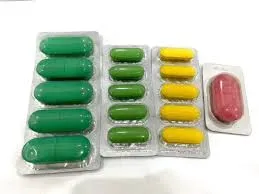- Afrikaans
- Albanian
- Amharic
- Arabic
- Armenian
- Azerbaijani
- Basque
- Belarusian
- Bengali
- Bosnian
- Bulgarian
- Catalan
- Cebuano
- Corsican
- Croatian
- Czech
- Danish
- Dutch
- English
- Esperanto
- Estonian
- Finnish
- French
- Frisian
- Galician
- Georgian
- German
- Greek
- Gujarati
- Haitian Creole
- hausa
- hawaiian
- Hebrew
- Hindi
- Miao
- Hungarian
- Icelandic
- igbo
- Indonesian
- irish
- Italian
- Japanese
- Javanese
- Kannada
- kazakh
- Khmer
- Rwandese
- Korean
- Kurdish
- Kyrgyz
- Lao
- Latin
- Latvian
- Lithuanian
- Luxembourgish
- Macedonian
- Malgashi
- Malay
- Malayalam
- Maltese
- Maori
- Marathi
- Mongolian
- Myanmar
- Nepali
- Norwegian
- Norwegian
- Occitan
- Pashto
- Persian
- Polish
- Portuguese
- Punjabi
- Romanian
- Russian
- Samoan
- Scottish Gaelic
- Serbian
- Sesotho
- Shona
- Sindhi
- Sinhala
- Slovak
- Slovenian
- Somali
- Spanish
- Sundanese
- Swahili
- Swedish
- Tagalog
- Tajik
- Tamil
- Tatar
- Telugu
- Thai
- Turkish
- Turkmen
- Ukrainian
- Urdu
- Uighur
- Uzbek
- Vietnamese
- Welsh
- Bantu
- Yiddish
- Yoruba
- Zulu
Nov . 28, 2024 04:51 Back to list
Guide to Administering Ivermectin For Pigs Safely and Effectively
How to Inject Ivermectin in Pigs A Guide for Farmers
Ivermectin is a broad-spectrum antiparasitic agent that is widely used in veterinary medicine, particularly in swine production. It is effective against a variety of parasites, including internal worms and external parasites such as lice and mites. Understanding how to properly inject ivermectin in pigs is crucial for ensuring their health and productivity. This article will provide a comprehensive guide on the correct administration of ivermectin in pigs, including dosage, methods of injection, and safety precautions.
Understanding Ivermectin
Ivermectin belongs to the avermectin class of medications and works by interfering with the nervous system and muscle function of parasites, ultimately leading to their paralysis and death. Its efficacy makes it a staple in swine health management. When used correctly, ivermectin can significantly reduce parasitic infestations, leading to better weight gain, improved feed efficiency, and overall healthier animals.
Dosage and Administration
The appropriate dosage of ivermectin varies based on the weight of the pig and the specific problem being treated. Typically, the recommended dose is around 0.2 to 0.3 mg per kilogram of body weight. For example, if you have a pig weighing 100 kg, you would administer approximately 20 to 30 mg of ivermectin.
Ivermectin can be administered in several forms, including orally, topically, and through injection. The injectable form is often preferred for its quicker action and reliability in ensuring the entire dose is received by the animal.
Steps for Injection
1. Preparation - Gather all necessary supplies, including ivermectin, a syringe (preferably a disposable one), and a needle (usually 18 to 20 gauge for pigs). - Ensure that you have on hand antiseptic to clean the injection site and gloves for hygiene.
how to inject ivermectin in pigs

2. Choose the Injection Site - The most common site for injection in pigs is the neck, specifically just behind the ear. This site is preferred as it is easier to access and less likely to damage meat quality. - Make sure to avoid areas with swelling, lesions, or existing infections.
3. Clean the Injection Site - Use an antiseptic solution to clean the site before injection. This reduces the risk of infection.
4. Draw the Medication - Draw the appropriate amount of ivermectin into the syringe. Make sure to expel any air bubbles to ensure accurate dosing.
5. Inject the Ivermectin - Insert the needle at a 90-degree angle to the skin, quickly but gently. Aspirate the syringe to ensure that you are not in a blood vessel; if blood appears, withdraw the needle and choose a different site. - Inject the medication slowly and steadily.
6. Post-Injection Care - Withdraw the needle and apply gentle pressure to the injection site to minimize bleeding. - Dispose of the used syringe and needle properly to ensure safety.
Safety Precautions
- Always wear gloves when handling medications to protect yourself from potential skin absorption. - Ensure that ivermectin is stored according to the manufacturer's instructions, typically in a cool, dry place away from direct sunlight. - Keep a record of which pigs have received ivermectin, including dosages and dates, for tracking purposes. - Follow the withdrawal periods for ivermectin before slaughter to ensure that the drug has cleared from the animal's system. This is crucial for food safety and compliance with regulatory guidelines.
Conclusion
Administering ivermectin to pigs is an essential skill for farmers and livestock handlers aiming to maintain optimal health and productivity in their herds. By carefully following the recommended dosages, employing proper injection techniques, and adhering to safety precautions, farmers can effectively manage parasitic infestations in pigs. Always consult with a veterinarian if there are any concerns or questions regarding the use of ivermectin or any other veterinary medications. Proper use of ivermectin is not only a key aspect of animal husbandry but also contributes to the overall well-being of livestock, promoting a healthier and more productive farming operation.
-
Guide to Oxytetracycline Injection
NewsMar.27,2025
-
Guide to Colistin Sulphate
NewsMar.27,2025
-
Gentamicin Sulfate: Uses, Price, And Key Information
NewsMar.27,2025
-
Enrofloxacin Injection: Uses, Price, And Supplier Information
NewsMar.27,2025
-
Dexamethasone Sodium Phosphate Injection: Uses, Price, And Key Information
NewsMar.27,2025
-
Albendazole Tablet: Uses, Dosage, Cost, And Key Information
NewsMar.27,2025













